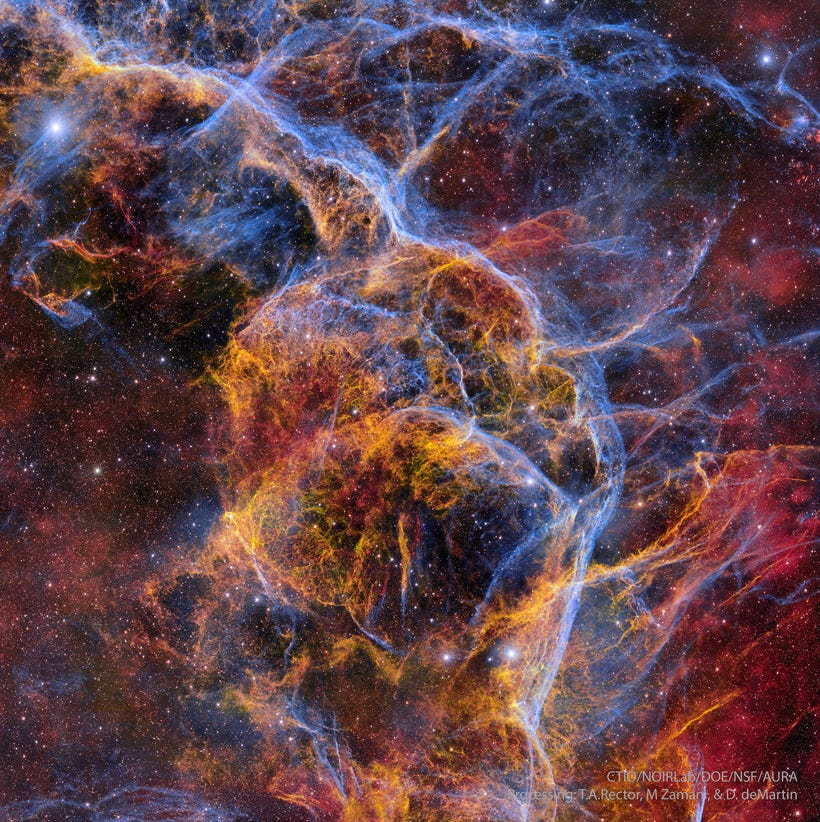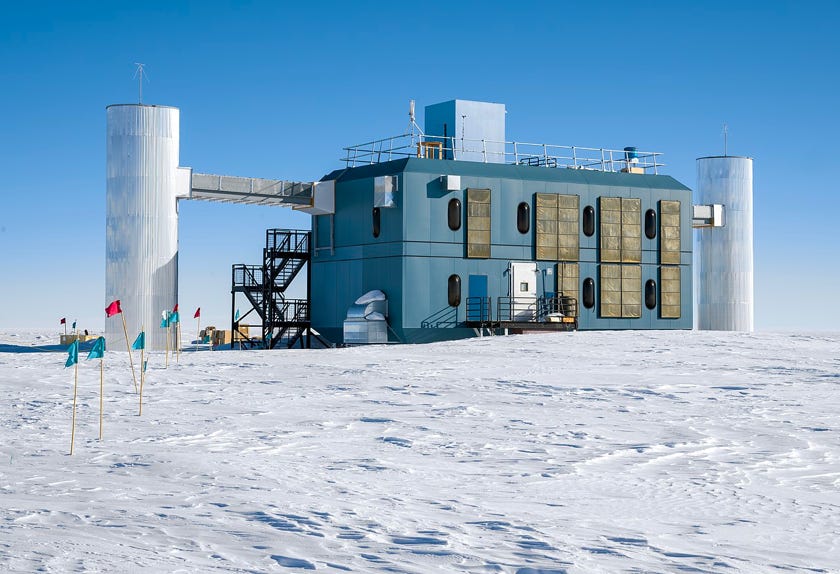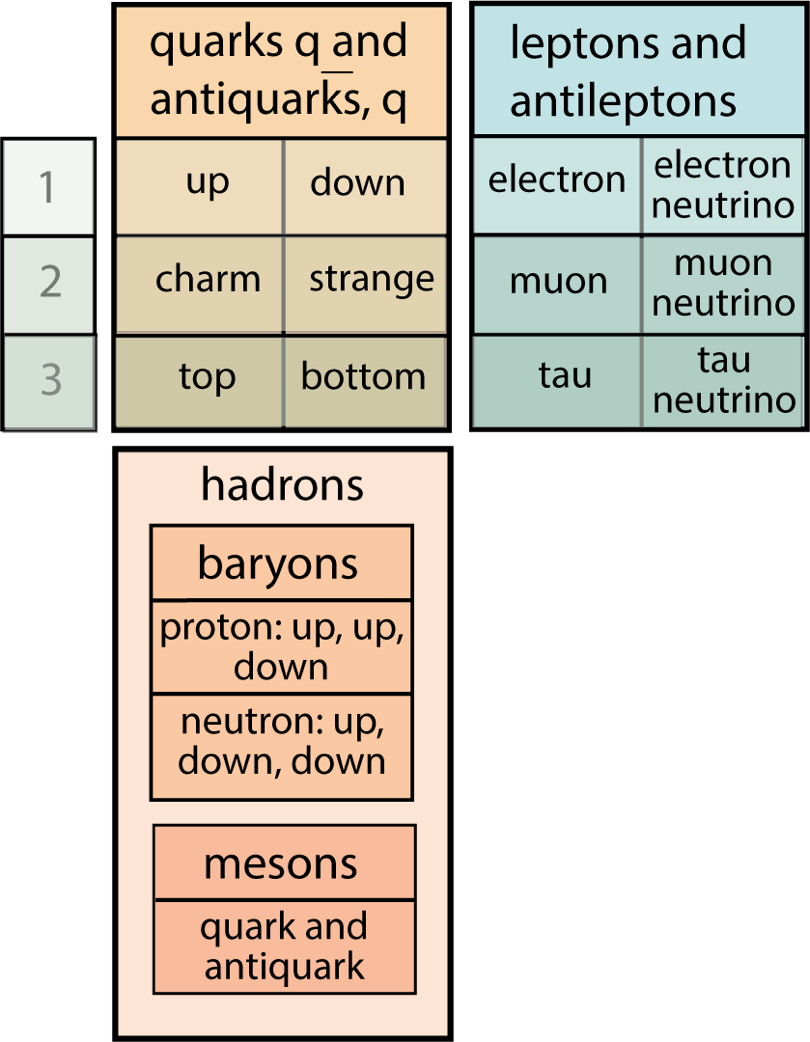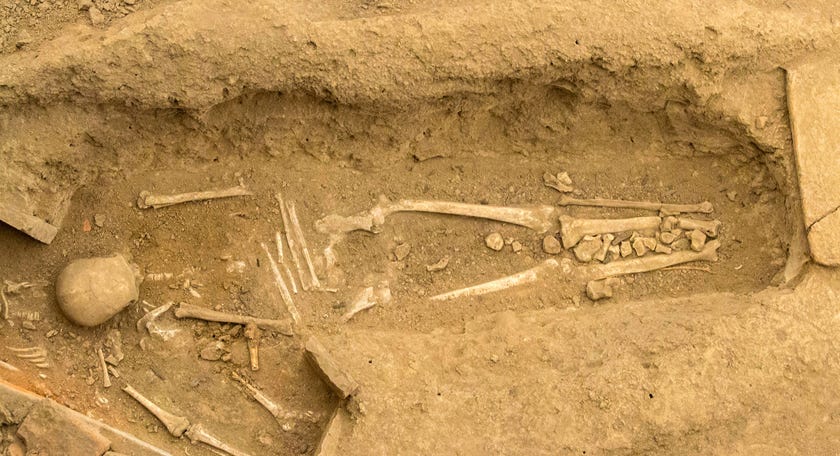Connecting pre-university students with professional science

Contextual Curriculum Connections
A13 Neutrinos – leptons, weak interactions, β decay, conservation rules
in the context of Antarctic neutrino research
A National Science Foundation introduction to the IceCube neutrino detector, featuring team members from around the world.

About 11 000 years ago, people might have seen the relatively short-lived appearance of a new bright star – a supernova event.
The shock wave spread the gases of the star out into the space around, and they are still visible using light-based telescopes.
A supernova is also a major source of neutrinos.
Previously, astronomers used the electromagnetic spectrum, but neutrinos provide a new way to investigate events like the deaths of stars. There is now a whole new field of study – neutrino astronomy.
A supernova remnant in the Vela constellation
Image: CTIO, NOIRLab, DOE, NSF, AURA; Processing: T. A. Rector (U. Alaska Anchorage), M. Zamani & D. de Martin (’s NOIRLab)

The above ground IceCube research building. A block of ice below the building, about 1 kilometre across, is where the detection happens.
Image: Christopher Michel
Neutrinos have tiny mass so gravity doesn’t impress them much. They have no charge, so they ignore electromagnetic forces. They are blind, too, to the strong nuclear force that produces quark-to-quark interactions. That makes them hard to detect.
They do get involved, though, in the weak interaction.
These interactions can, just occasionally, produce other particles and bursts of light.
The Antarctic has a lot of ice. So investigators buried thousands of light-sensors into the ice at the South Pole. This is the IceCube neutrino detector.
International scientists talk about the excitement of the new field of neutrino astronomy. This video is also from the National Science Foundation.
This is a series of animations about fundamentals of the IceCube detector, produced by IceCube Collaboration.

Very many decades of study has produced a system of sorting sub-atomic particles – the Standard Model.
Quarks (and antiquarks), leptons (and anti-leptons) are fundamental particles. They don’t (so far) seem to have internal structure.
Neutrons and protons (and other hadrons such as pions) have internal structures of quarks (or antiquarks).
Neutrinos are produced by processes involving the weak interaction.
That includes radioactive β-decay, supernova events, nuclear fusion (including in the Sun) and processes of swallowing of stars by black holes. There are also ‘relic’ neutrinos, with low energy, that are left over from the early stages of the Big Bang process.
Neutrinos are leptons. Leptons have no known inner structure and are therefore fundamental particles.
Protons and neutrons have known internal structure, made of quarks. So quarks are fundamental but protons and neutrons are not.
Radioactive beta decay (β decay) generates neutrinos.
or beta-
neutron proton electron antineutrino

Outside nuclei, neutrons are unstable. They decay, with an effective half-life of about 10 minutes. The decay involves the weak interaction, so it involves leptons.
baryon baryon lepton antilepton
Physicists don’t tell the Universe how to behave. Instead, they look for nature’s patterns.
In changes such as neutron decay they have discovered nature’s conservation patterns.
Charge is conserved. So when a neutral particle decays the total charge produced must add up to zero.
It seems that lepton number must also be conserved. A neutron has no leptons – its lepton number is zero.
An electron is a lepton. We say that is has a lepton number of 1. Nature, it seems, only allows neutron decay to happen if it also produces a particle with a lepton number of -1. It needs a name. We call it an anti-lepton.
It’s an antiparticle, and the bar over the neutrino symbol (the Greek letter nu) is used to indicate this status.
Radiocarbon dating can show the age since death of organic material, including ancient algae in ice cores or bones discovered during archeological digs.

Inside nuclei, neutrons are generally more unstable, resulting in beta- decay, when the neutron:proton ratio is high. So isotopes that are neutron rich tend to change (decay) by beta- emission. Here is an important example – spot the similarity with the neutron decay process shown above.


The half-life of this decay process is 5730 years.
Carbon-14 is continuously produced in the atmosphere by collisions of cosmic radiation from space with nuclei of nitrogen.
While we are alive we take in that carbon-14. Some nuclei decay while we are alive, but of course it keeps on decaying after we die. Once dead, we are no longer eating or breathing so we stop taking in carbon-14. The proportion of the carbon in our bodies that is carbon-14 decreases over time.
This provides a way to measure how long ago a sample of once-living material has been dead. It’s radiocarbon dating.
Conservation rules include conservation of charge and of lepton number.
Protons are extremely stable. However, in proton-rich nuclei (with a proportion of protons relative to neutrons that is higher than is required for stability) beta+ decay can happen. It changes a proton into a neutron.
or beta+
proton neutron positron neutrino

baryon baryon anti-lepton lepton
Note that charge is conserved. Positive charge is shown as 1, before and after.
This time, the positron is an antiparticle, with a lepton number of -1. The neutrino is a lepton but is not an antiparticle, so it has a lepton number of 1.
In this decay process, initial and final lepton numbers both have a total of 0.
An example of beta-plus emission:

(C) David Brodie 2025 Note that all external videos and websites remain copyright of the creators
